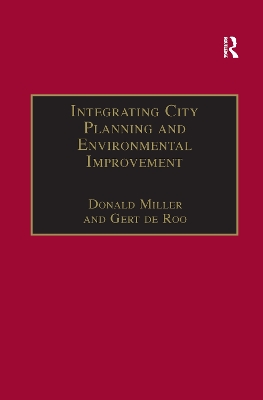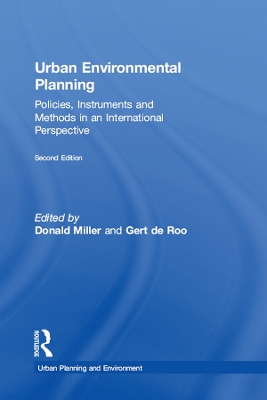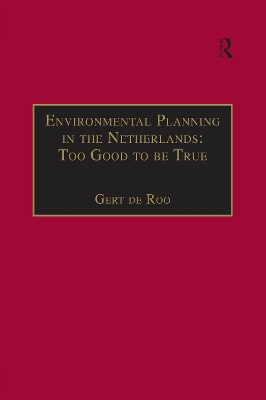Urban Planning and Environment
4 total works
Since Integrating City Planning and Environmental Improvement was originally published in 1999, the practice of integrating urban physical planning and environmental quality management has been widely adopted by governments worldwide. Fully revised and updated with a new preface by editors Donald Miller and Gert de Roo and new figures throughout, this second edition reports on the experience of 23 innovative programmes from 11 countries. Mostly written by practicing planners and government officials, the book looks at a wide range of integrated approaches which have been implemented and the critical assessment of these provides lessons for local and national governments interested in setting up similar schemes and suggesting ways of further innovation. While the Rio Earth summit, Habitat II and Kyoto have been a source of global principles for improving the environmental quality of human settlements, this book explores approaches to implement these policy positions and to make these calls for action operational. Consequently, the presentation of these cases deals not only with the technical aspects of measuring and controlling environmental spillovers, but also with the institutional, political and financial aspects of these programmes.
Smart Methods for Environmental Externalities
by Gert de Roo and Jelger Visser
Published 28 December 2011
In recent years, Dutch environmental policy has undergone some pivotal changes, the most significant of which have been decentralization and deregulation, encouraging local communities to develop and deliver policies which are tailor-made to their particular situation. These changes have led to the development of some innovative practical instruments for aiding sustainable environmental spatial policy. This book discusses these new 'methods for environmental externalities' and their significance in the development and delivery of Dutch environmental policies, particularly how they ensure that issues such as health and hygiene are introduced in the early stages of spatial planning processes. This book highlights the most prominent and relevant of these innovative 'methods for environmental externalities' as well as comparing them with some of the classic methods, and analysing strengths and weaknesses. It argues that having such a broad and varied choice of methods is the key to ensuring the impressive and groundbreaking Dutch creativity in environmental management. In conclusion, the book extrapolates current trends in environmental policy, expresses likely and possible developments in 'methods for environmental externalities' and shows how such methods can contribute in our ongoing attempts to develop and deliver liveable, pleasant and sustainable towns and cities.
Originally published in 1997, Urban Environmental Planning provides a groundbreaking overview of innovative methods and techniques for measuring and managing the environmental effects of urban land uses on other urban activities. Fully revised and updated, this second edition brings together a team of leading environmental planners and policy makers from the US, UK, Europe and SE Asia to address the central questions confronting sustainable urban development. Typical questions include: How can you measure and manage the negative environmental effects of intrusive urban activities such as manufacturing and transport on sensitive land uses including residential and recreational areas? Can a balance be found between reducing these effects through means such as separating conflicting land uses? While other sources identify the need for effective programmes to improve urban environmental quality, this volume describes and assesses analytical methods and implementing programmes practised by leading communities around the world.
Environmental Planning in the Netherlands: Too Good to be True
by Gert de Roo
Published 28 November 2003
The Netherlands is one of the most prominent and innovative countries in the field of environmental planning. Over the past decade, its government has introduced such ground-breaking schemes as Integrated Environmental Zoning, the City-Environment Project, the Bubble Concept and Policy Concepts and new approaches to coping with noise, odours, soil pollution, air pollution and safety issues. These initiatives and policy tools reflect a rapidly changing and decentralising environmental policy, which contrasts with more conventional environmental ideologies. However, at present little is known of these policies in the international arena. De Roo shows how and why, in recent years, the country's planning system has moved away from its traditional 'top-down' structure. The resulting changes have had far-reaching consequences for the traditional principles of Dutch environmental policy. In addition, measures for compensating excessive environmental loads are now open to discussion and environmental quality is a subject of negotiation among stakeholders. All these developments mean that environmental policy-making has become more closely integrated with local initiatives that focus on general location-specific qualities. In this book, this development is referred to as 'tailor-made comprehensive planning', which relates closely to the local context, is area-specific, situation-dependent, and embraces shared governance.



